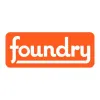Take a look inside 5 images
Project Foundry
Pros: Supports a student-centered, project-based classroom with a number of multifaceted tools to help both teachers and students.
Cons: The learning curve can be steep when setting up and managing students' PBL experience.
Bottom Line: A powerful, though sometimes complex, tool for providing inquiry-based, student-centered learning.
Setup for Project Foundry requires a fair amount of training, practice, and support. Because it's so multifaceted, the learning goals, learning plans, and assessments should be carefully aligned and set up ahead of time to ease assigning and assessing students' work and progress. The built-in assessment (and self-assessment) tools are handy for encouraging collaboration and critical thinking.
After you start by assigning projects, work toward eventually scaffolding students to the point that they can take ownership of their own projects and deadlines. At the beginning of the year, go ahead and assign research projects and deadlines to your kids. But by the end of the year, your students should be generating their own research questions and proposing their own project plans and deadlines for approval.
Project Foundry is designed specifically for schools or classrooms that are using a project-based curricular model. Through the website, teachers and students can manage and organize every step of the PBL (Project Based Learning) experience. Teachers can assign projects, or students can propose their own projects and timelines -- they'll also track their progress toward project goals and complete assessments and reflections assigned by the teacher.
On the site, teachers can see a list of students, as well as a list of every project being worked on in their class. Teachers can also view projects that students have proposed for approval, as well as journals, tasks, and other assessments that they've assigned to students. Journals and checkpoints can be dictated by either the teacher or the student, depending how projects are set up or assigned. Students can develop a mission statement and project plan, set goals, and report their accomplishments as they work.
Project Foundry is a good platform for managing truly individualized, student-driven work in a dedicated PBL classroom or school. Teachers can support every student throughout the experience, from project-planning through assessment -- a challenging task without this type of organizational tool. Further, it can teach students self-sufficiency and valuable project-management skills.
However, while teachers can track individual students' learning plans, it doesn't appear that there's a way to see a snapshot of an entire class' progress in one place. This is unfortunate for those attempting to incorporate some tenets of project-based learning into a more traditional classroom setting. While there's great support for mastery-based skills and goals, this may require some translation for those more used to traditional scores and letter grades. Nevertheless, Project Foundry has the ability to support student choice, and students can create portfolios of their work for assessment and reflection. All of this creates the potential for excellent, self-motivated, and independent learning.












